
We ♥ Rubber
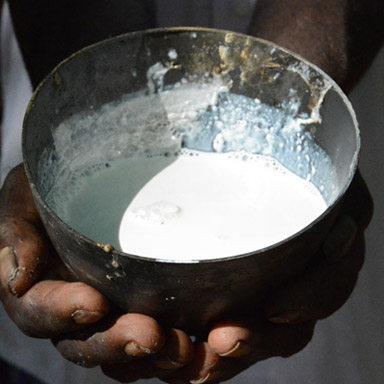
Natural rubber as climate saver?
The rubber tree Hevea brasiliensis has an enormous importance for us besides the production of latex milk (the rubber tree sap). During their lifespan, rubber trees absorb a lot of CO2 and thus counteract climate change. And this can happen in large quantities, because rubber trees absorb more CO2 than tropical rainforests. Synthetic rubber, on the other hand, is made from crude oil and increases the CO2 in the air. After the trees have been felled, the valuable and versatile wood is supplied to the timber industry and processed into numerous building and wood products, so that the CO2 is bound for many years.
Direct influence on climate through conscious consumption
That is why we ourselves can actively counteract climate change with every receipt. For example by choosing natural rubber products instead of synthetic ones because of their negative CO2 balance. This increases the demand for and production of more environmentally friendly rubber; trees should be planted more frequently.
Unfortunately, however, an opposite trend can be observed. Due to the low world market prices of rubber, felled trees are often replaced by palm trees as the palm oil trade is booming worldwide.
From tree to crepe rubber: first steps
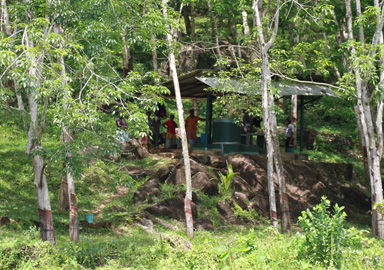
view of Hevea brasiliensis plantation 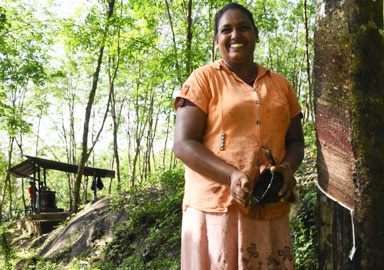
plantation worker next to rubber tree 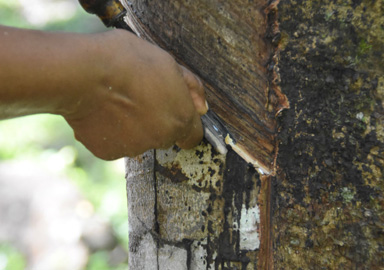
carving the bark 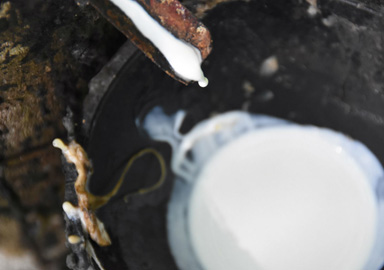
latex milk running into tray 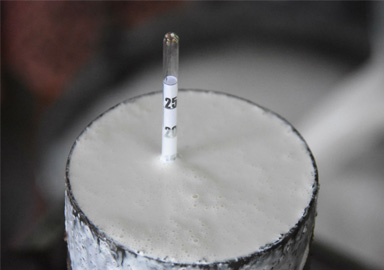
determining latex content 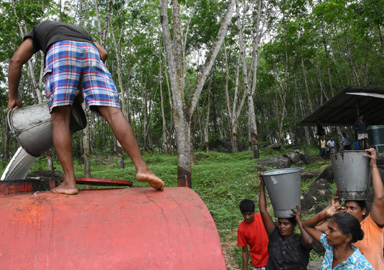
Collecting the harvested latex
The story behind natural rubber
The snow-white resin of the rubber tree (Hevea brasiliensis) was first collected by the indigenous peoples of South and Central America, as the natural rubber could already be used for various purposes due to its elastic properties back then.
Valuable raw material
The discovery of vulcanisation by Charles Goodyear in 1839 led to a rapid growth in the demand for rubber. It quickly became an important and sought-after raw material for many products and was already being processed industrially in the nineteenth century as rubber was in the past and still is today an indispensable part of the tyre industry because of its properties.
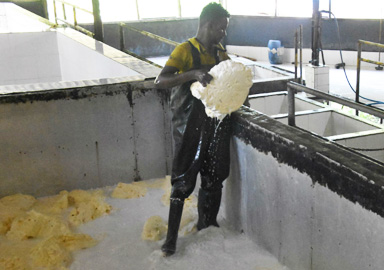
latex milk processing 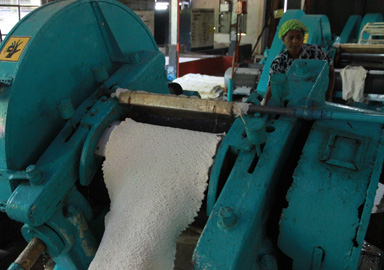
pressing latex bands, so called “crepe” 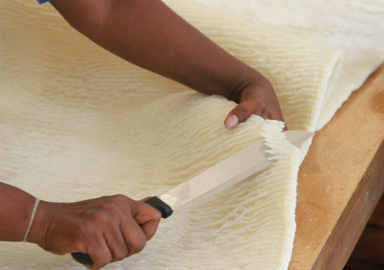
crepe quality check 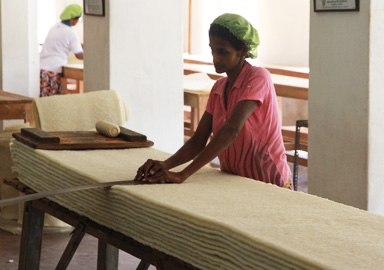
final inspection 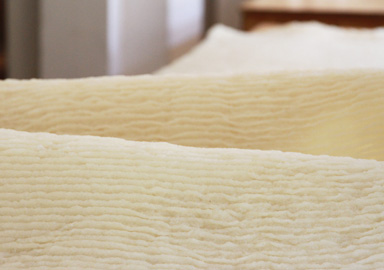
natural rubber crepe is ready for further processing
Commercial use of rubber
In 1832 the commercial use of rubber in the rainforests of Peru began, bringing wealth and fame to the region. In 1876 Henry Wickham collected 70,000 rubber tree seeds and brought them to London. There, 2,000 plants grew from them. However, only eight of the young plants survived until their arrival in Malaysia. In 1910 the monopoly of the rubber barons from Peru was ended.
Reflection on advantages of the renewable raw material
Today, synthetic plastics are used for many purposes for which natural rubber was used in the past. This is a regrettable development as natural rubber is produced from a renewable raw material. It rots by being decomposed by micro-organisms and thus, reintegrates into the natural cycle. With our products we would like to actively counteract this development: Join us in living sustainably and choose our products made of FSC®-certified fair trade natural rubber!
